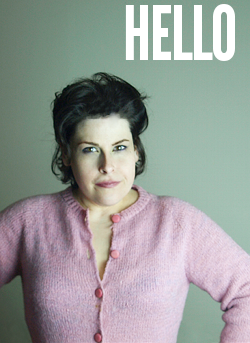Brand Siren Case Study
Getting Found vs Being Seen: How SEO Doesn’t Matter Without Your Tribe

If you have a website, you know what SEO stands for and chances are you even know a thing or two about precisely how to optimize your site for search engines, even if you outsource all the work.
But getting found is only the beginning. Because there are a ton of websites people could explore when they Google something, people are quick to leave your site if it doesn’t feel right.
You probably already know that you have mere milliseconds to capture a visitor’s attention or else they’re “bouncing” away from your site. And you probably also know that 94% of the time people close your site so quickly, it’s a design issue (Northumbria University).
So, it’s not enough to rank highly in the search engines. You’ve got to create chemistry once people are on your site.
How do you do create the kind of chemistry that keeps visitors around so they can join your Tribe?
- With great overall design.
Choose the colors that your audience loves (that reflect your brand), shapes that are a good fit for your message, navigation that suits your Brand Siren, photos that connect with your people, and typography that works well for your visitors.
Follow the Yellow Brick Road: How to lead your tribe when you’re a wanderer

(We’re currently profiling each of the five Brand Sirens, one by one. See the full series of Brand Siren Case Studies here. If you don’t know who your Brand Siren is, take the quiz to find out.)
When it comes to Judy’s work with clients, it’s always about the journey, not the destination. (In this way, she’s Edith’s exact opposite.) This means that a Judy’s relationship with her clients is deeply rewarding, and often very personal–she knows even the minute details of what her clients are struggling with.
Just because the journey is rewarding, though, doesn’t mean it’s easy for a Judy. Would-be clients can drag their feet getting started with a Judy because they don’t see the final outcome and are reluctant to commit until they do. This often leads to endless emails and pre-work conversations–if the Judy offers free consultations, she can expect people to ask for more than one before signing on the dotted line.
Also, Judys often add new services and skill-sets as they explore, which means even Judy herself isn’t always entirely sure what she does for her clients (or, she may not be able to communicate it clearly).
All of this tends to leave Judy struggling to charge the rates she deserves because she can feel like her skills aren’t up to par because she has less experience than the other types (because she’s always adding new offerings on the fly).… Keep reading
Snap Your Fingers, Edith: How a Crazy Bus Driver Can Teach You All About Building an Audience Before You Have a Niche

In the imaginary world where your business is a bus, each of the five Brand Sirens types has a different approach to bus-driver-dom. For instance, Audreys tend to have trouble leaving the station (what if someone’s just running late and really needs this bus?) and Katharines tend to leave before the assigned time (what if we miss half the fun out there because we’re lollygaging?).
(Wondering who the heck are Edith, Katharine, and Audrey? They’re three of the five Brand Sirens. Basically, they’re role models for an easier approach to stepping into the spotlight with your business. If you’d like to find out who your role model is, you can take the free quiz.)
Ediths, though, start with the bus station.
See, an Edith tends to rename the bus. She rewrites the routes. And she has a tendency to suddenly pull out of the station while someone’s still getting on (or off) the bus.
In other words, she can be a danger to herself and others! (Hold on, though–since you’re not actually driving a bus, all of this is actually a good thing, handled safely.)
See, Edith has to generate controversy. Even if it’s just a small controversy.… Keep reading





